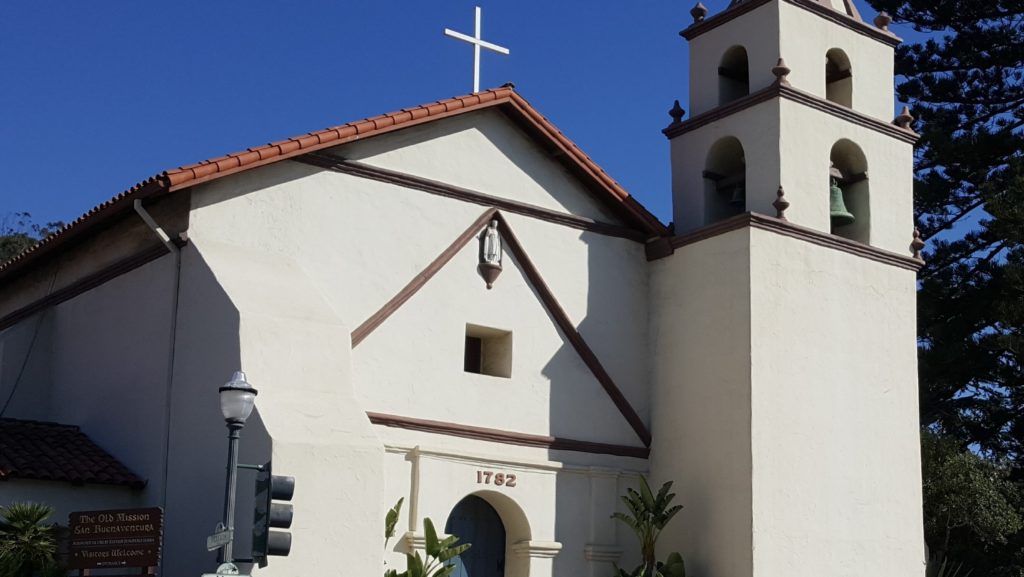Catholics across the world are embarking on pilgrimages to commemorate the Jubilee Year of Hope.
Many will travel to Rome to visit the four major basilicas and pass through their Holy Doors so as to gain a plenary indulgence.
For those that are unable to travel to Rome, however, they are still able to participate by traveling to one of the numerous Jubilee Year pilgrimage sites across the country.
In the United States, bishops could designate churches, cathedrals, shrines, monasteries, or other religious locations as "jubilee pilgrimage sites."
According to a Vatican decree on Jubilee Year indulgences, any person can gain a jubilee indulgence if they undertake a "pious pilgrimage" to any designated site and participate in Mass, adoration or receive the sacrament of penance there.
Across the country, basilicas, churches and shrines have begun opening their doors to local pilgrims.
These sites each have a unique history and hold significance in their local region, helping Catholics to encounter God in new ways.
In the densely populated East Coast, bishops have designated a multitude of jubilee sites located in dense cities and rural countryside.
Surrounded by dense forest, yet only a mere 50 miles away from New York City, sits Graymoor -- the Holy Mountain.
Run by the Franciscan Friars of Atonement, Graymoor serves as a home for the friars and a retreat center. It also houses many ministries, such as St. Christopher's Inn, a residential program for men battling drug addiction.
Cardinal Timothy M. Dolan of New York designated Graymoor as one of the eight jubilee pilgrimage sites in his archdiocese.
When Atonement Father Jim Gardiner, director of special projects, and the other friars learned about the designation, they were ecstatic.
"We're grateful to be named a pilgrimage site because Cardinal Dolan could've named all kinds of other places," Father Gardiner told OSV News. "We see it as a sign of support and encouragement, which is especially needed as these are tough times, since we, like many other places, have been struggling with vocations."
In Father Gardiner's own vocation story, a pilgrimage to Graymoor played a significant role. He said it launched his discernment journey.
"In 1948, I was in the first grade when I visited Graymoor," Father Gardiner recalled. "It was so exciting. We had Mass outdoors and walked around the property. When we were preparing to leave, one of the friars stopped and asked me if I had a good day. I said yes, and he said, 'I'm going to pray every day that you come back here.'"
"I have no idea who that friar was, but as a result of that pilgrimage, I've been here 60-plus years now," he said.
While Father Gardiner does not know whether or not another pilgrim will find their vocation, he and the other friars are excited to welcome the busloads of pilgrims that are coming from the surrounding area.
"We want to be here for people and to host and support their pilgrimages," Father Gardiner said. "We want people to take part in the liturgies we have here, to walk around our property and pray on the trails and just encounter the Lord here."
To commemorate the Jubilee Year, Father Gardiner and other staff members have developed a variety of programs and events.
"We have great staff here that has been meeting regularly, coming up with all kinds of great ideas," Father Gardiner said. "We have special Masses planned, special retreats; but really, we just have a great space that we want visitors to take part in."
In the South, Sacred Heart Parish in downtown St. Petersburg, Florida, is preparing to welcome a plethora of pilgrims.
Founded in the early 1850s, the parish became a cornerstone in the Tampa Bay area as the city grew around it.
"Sacred Heart was founded in the infancy of Tampa Bay as a city," Rob Boelke, director of communications at Sacred Heart, told OSV News. "John Jackson, an Irish immigrant, and his wife, Ellen, arrived in the area as a surveyor. He surveyed the majority of our downtown and the older areas of the city itself, and those streets largely stand in the same grid that he had put together. Soon after arriving, he and his wife sent a petition to the Diocese of Savannah asking for a parish to be founded."
In the 1850s, the area that now comprises the St. Petersburg Diocese was part of the Diocese of Savannah, Georgia.
Soon after the Jacksons' request, a small wooden church was built, served by Jesuit missionaries. By the late 1800s, the parish had outgrown it and began constructing a new Romanesque-style church. Completed in 1905, the church remains today as a unique architectural fixture in Catholic Florida.
"Most of the churches in Florida were built in the '60s and '70s, and they are not architecturally significant," Boelke said. "Sacred Heart has very unique architecture that is much more in line with churches that you would see across the Northeast or in the Midwest. It's largely Romanesque with beautiful stained-glass windows so people are drawn to the parish for its beauty."
In 2005, Franciscan friars assumed parish operations, promoting their unique charism within the parish and local community.
Sacred Heart is one of six Jubilee pilgrimage sites in the Diocese of St. Petersburg. Already, pilgrims are flocking to the church to commemorate both the Jubilee Year and the parish's 120th anniversary.
"We are hosting lots of tours for both Catholic and secular schools; other parishes are calling us to set up times for large group visits," Boelke said. "We have this unique history and we are excited to share and be able to share the Franciscan charism that we have with more people."
Located in the Midwestern small town of Perryville, Missouri, the National Shrine of Our Lady of the Miraculous Medal is preparing to welcome pilgrims to its vast property for the Jubilee Year.
One of nine Jubilee sites in the Archdiocese of St. Louis, the national shrine has a robust history dating back to 1818, when a small log cabin church was founded on the property. The shrine encompasses 55 acres and includes a large church, a rosary walk and a grotto.
Run by Vincentian priests, Father Jim Osendorf, superior of the community, told OSV News that he hopes pilgrims will develop a deeper relationship with the Blessed Virgin Mary after visiting the site.
"Our facility is dedicated to the Blessed Mother and to commemorate the appearances of Mary to Catherine Labouré," Father Osendorf said. "This just seems to be one of the perfect places to come just to kind of get away to pray, to meditate and to deepen our relationship with Mary, who leads us to Jesus."
When the 2000 Jubilee Year took place, Father Osendorf's predecessor asked the archbishop of St. Louis to designate the shrine as a pilgrimage site. So Father Osendorf did the same for the 2025 Jubilee.
"Jubilee years are focused on deepening one's relationship with Christ, and Mary helps us to do that," Father Osnedorf said. "As a community, we thought this would be the perfect way of helping us to fulfill our mission of helping people toward a deeper relationship with Jesus Christ through Mary."
To commemorate the Holy Year, the community has planned various events throughout the year that include speakers, music and special liturgies.
"We have a number of guest speakers who will be coming and will have musicians regularly," Father Osendorf said. "But really, we just want people to come and encounter God on our property. From my office, I can see people coming to pray, pray the rosary on our walk or sometimes just getting away to think, to ponder, to meditate. And it brings me so much joy to see this happening."
Out in the West, historical shrines and churches are abundant, as they have been ministering to locals since Franciscan missionaries established them centuries ago.
One such church is Mission Basilica of San Buenaventura in California, which was founded in 1782. Since its founding, the basilica has played a critical role in the local community, Father Tom Elewaut, pastor of the mission, told OSV News.
"There are 21 original missions established by the Franciscan padres in what is now the state of California," Father Elewaut explained. "The significance of our particular parish is that we were the last of the nine missions founded by St. Junipero Serra."
The town of San Buenaventura, located 70 miles from Los Angeles, grew around the parish. The original church built in 1809 and refurbished in 1812 after an earthquake remains as the primary worship space.
"The church building that we have today was originally finished in 1809," Father Elewaut said. "The artwork, the statues, the back altar -- that is all original from 1809. Everything that was used to decorate the church had been shipped up from New Spain (today's Mexico) ... so there is a lot of history in the church."
Father Elewaut is excited to welcome pilgrims from the surrounding area to the basilica. Everyday, pilgrims visit the historic church, and the priest uses these interactions and Sunday Mass as an opportunity to remind them to be pilgrims of hope.
"We are pilgrims of hope, and we certainly are including that message in our homilies weekly, and encouraging people to be hopeful in a world that sometimes wants to cast darkness; that we are to be people of hope in the light of Christ," he said. "And not only for eternal life, but to be hope-filled in this life as well."

